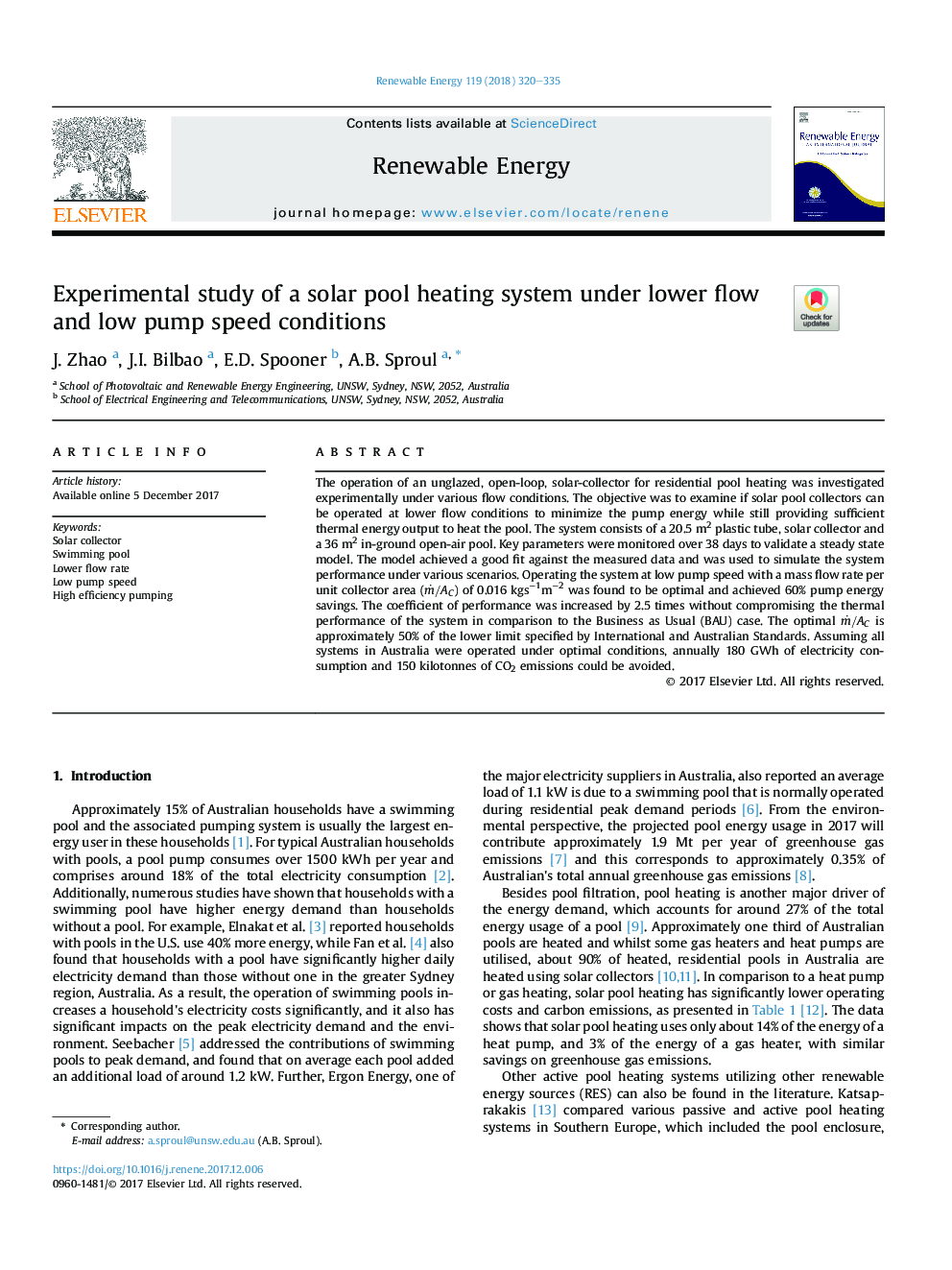| Article ID | Journal | Published Year | Pages | File Type |
|---|---|---|---|---|
| 6764882 | Renewable Energy | 2018 | 16 Pages |
Abstract
The operation of an unglazed, open-loop, solar-collector for residential pool heating was investigated experimentally under various flow conditions. The objective was to examine if solar pool collectors can be operated at lower flow conditions to minimize the pump energy while still providing sufficient thermal energy output to heat the pool. The system consists of a 20.5Â m2 plastic tube, solar collector and a 36Â m2 in-ground open-air pool. Key parameters were monitored over 38 days to validate a steady state model. The model achieved a good fit against the measured data and was used to simulate the system performance under various scenarios. Operating the system at low pump speed with a mass flow rate per unit collector area (mË/AC) of 0.016Â kgsâ1mâ2 was found to be optimal and achieved 60% pump energy savings. The coefficient of performance was increased by 2.5 times without compromising the thermal performance of the system in comparison to the Business as Usual (BAU) case. The optimal mË/AC is approximately 50% of the lower limit specified by International and Australian Standards. Assuming all systems in Australia were operated under optimal conditions, annually 180Â GWh of electricity consumption and 150 kilotonnes of CO2 emissions could be avoided.
Keywords
Related Topics
Physical Sciences and Engineering
Energy
Renewable Energy, Sustainability and the Environment
Authors
J. Zhao, J.I. Bilbao, E.D. Spooner, A.B. Sproul,
